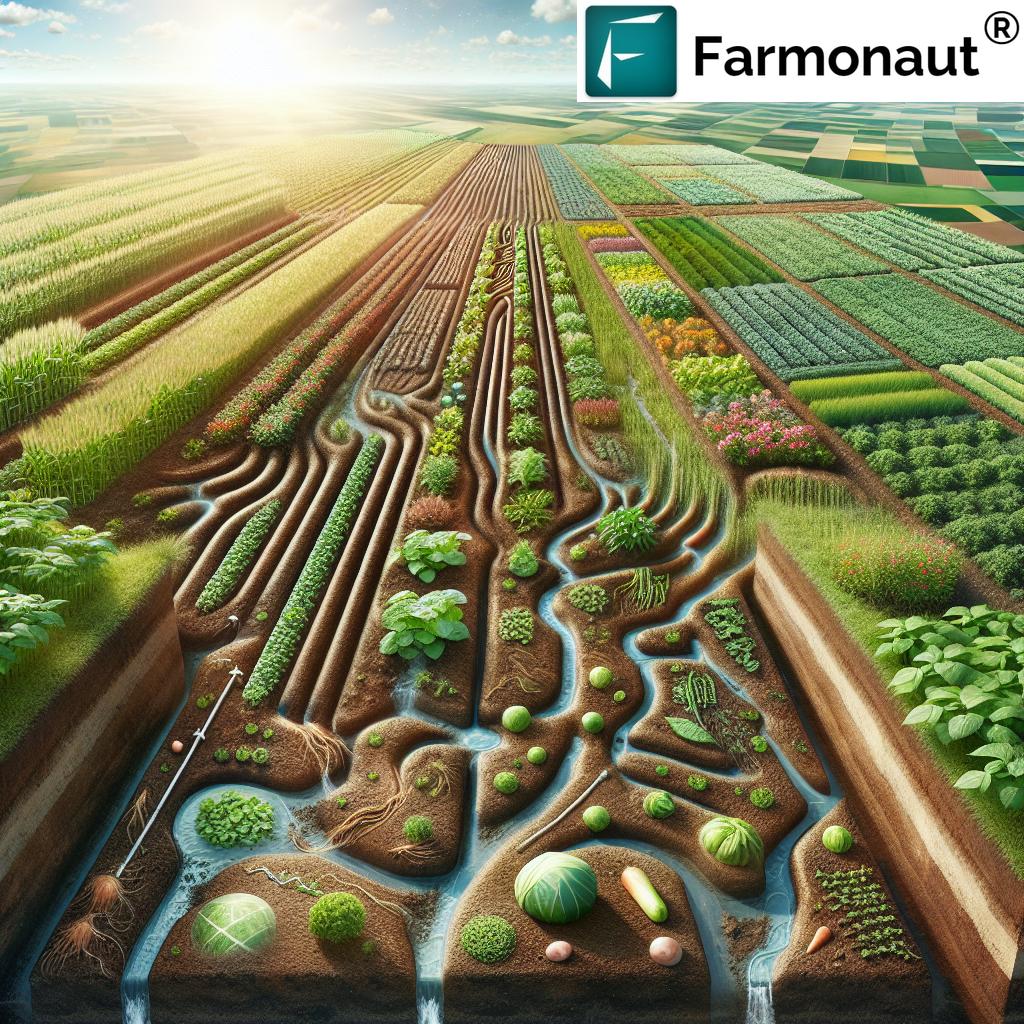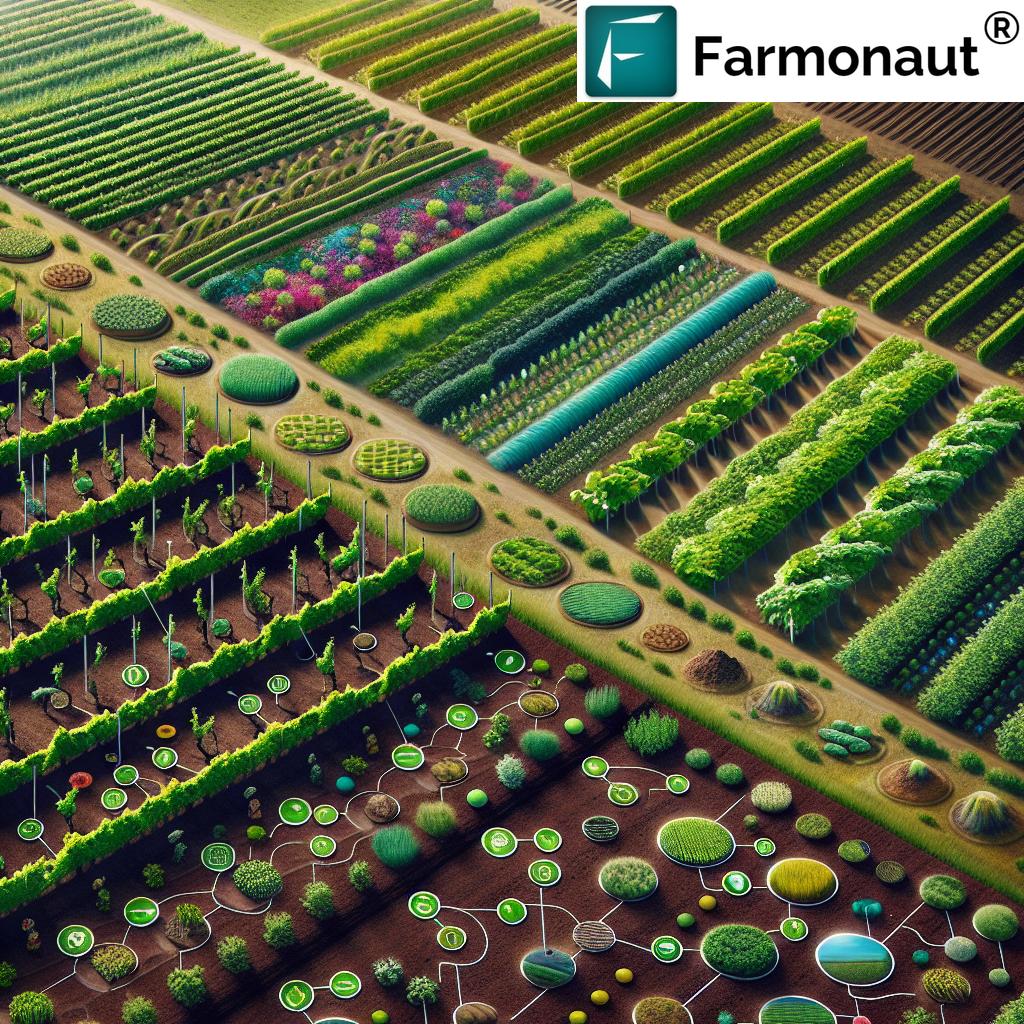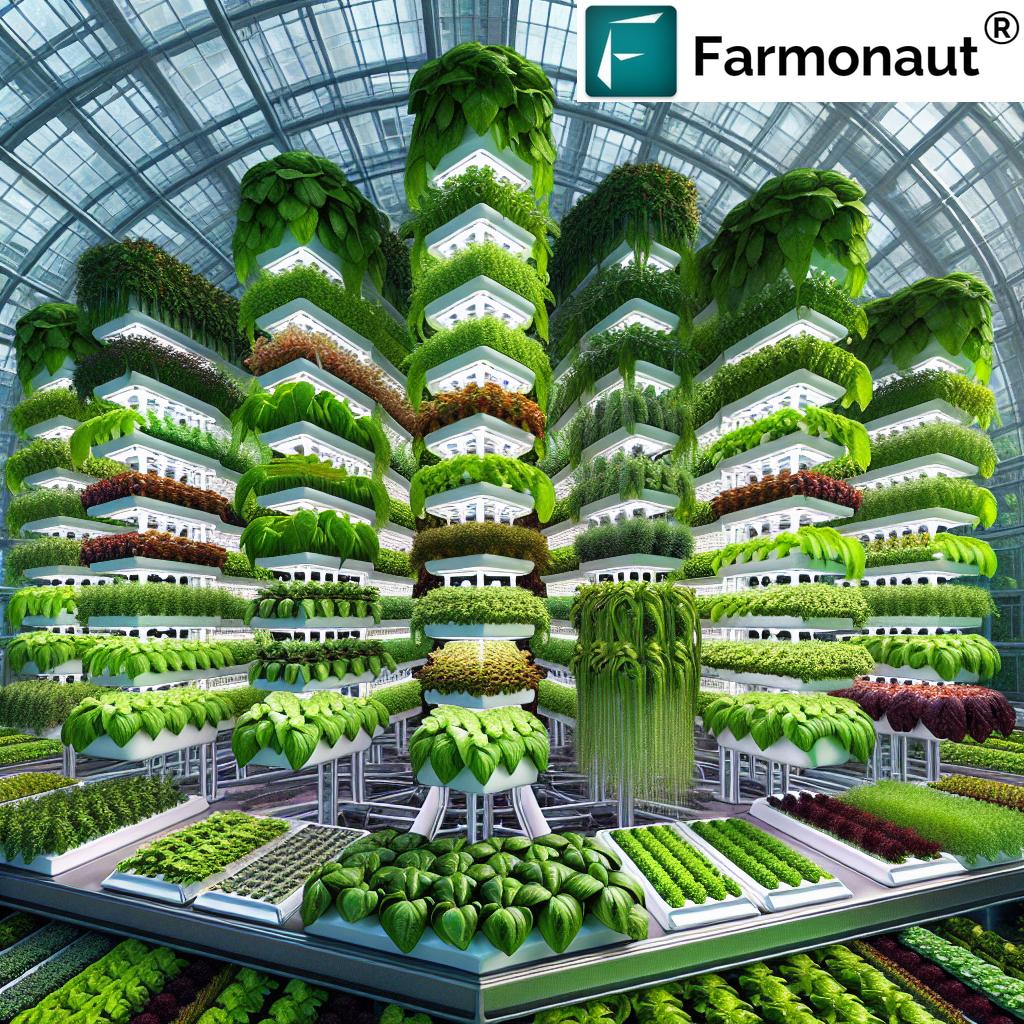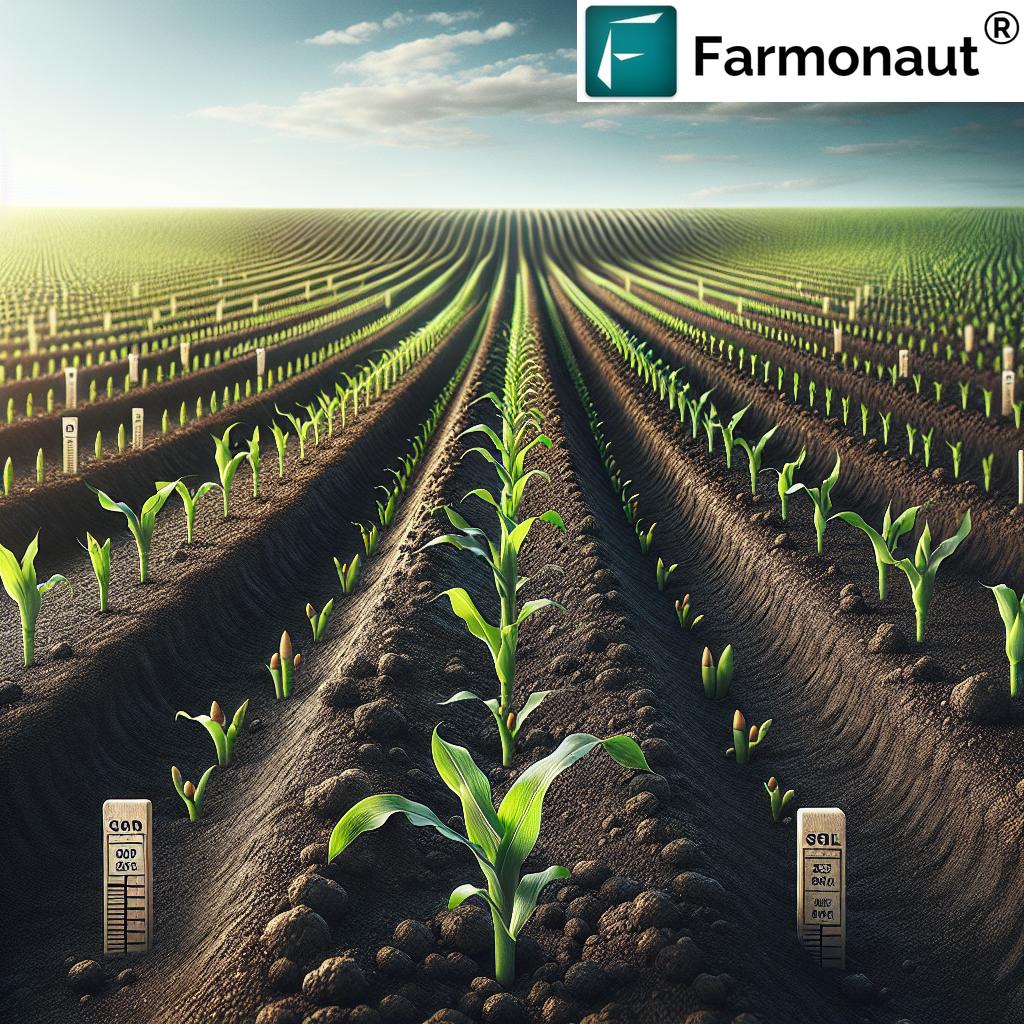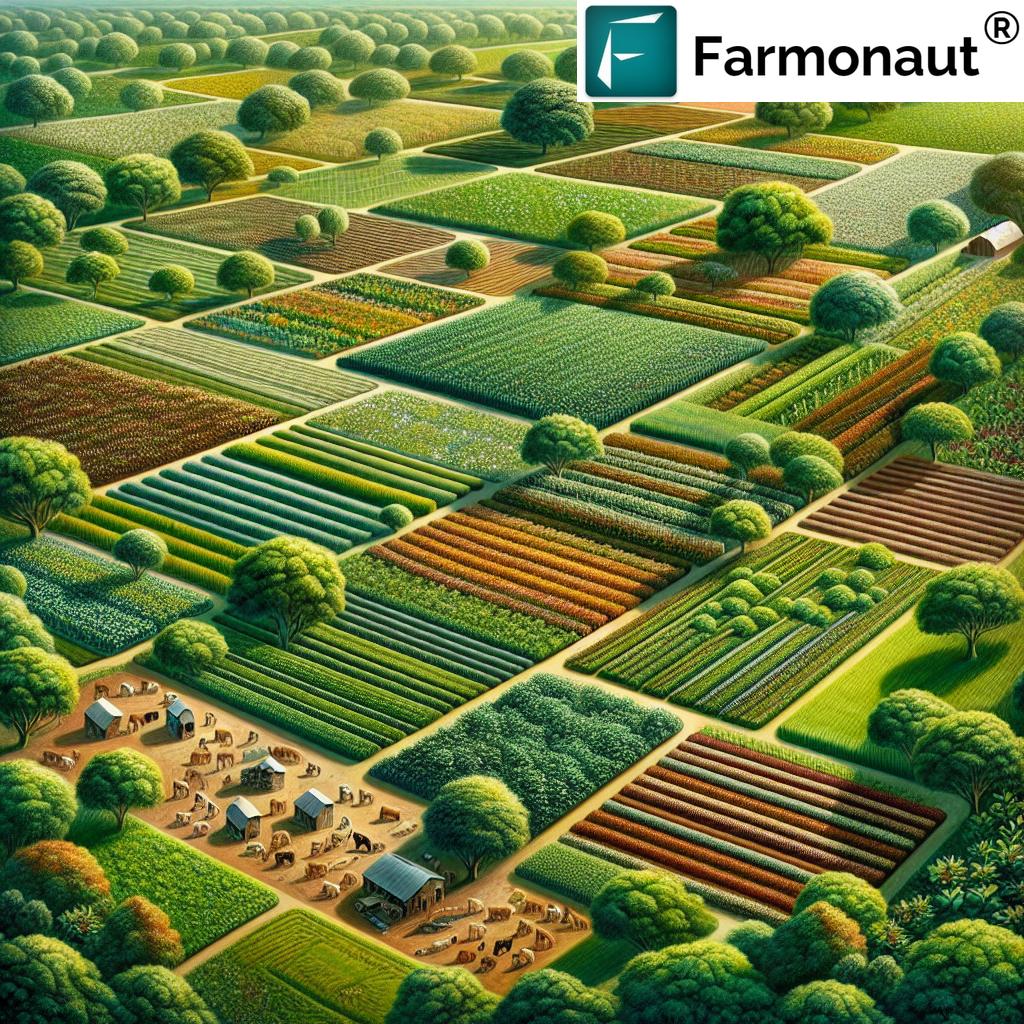Sorghum Sudangrass Seed: 7 Benefits for Cover Crop in 2026
Summary: Sorghum Sudangrass: A Versatile Cover Crop Driving Sustainable Agriculture in 2025

Access Farmonaut Web App

Download on Google Play

Get on the App Store
“”Sorghum sudangrass can increase soil organic matter by up to 25% in a single season.””
Introduction to Sorghum Sudangrass Cover Crop: Driving Sustainable Agricultural Practices in 2025 & Beyond
In the landscape of modern agriculture, sorghum sudangrass seed has emerged as a critical asset for sustainable farming practices—especially as we approach the environmental and economic demands of 2025 and beyond. As concerns about soil health, declining crop yields, erratic weather patterns, and rising input costs intensify, both farmers and agronomists are seeking innovative and resilient cropping systems. Among these, the use of sorghum sudangrass as a cover crop stands out for its versatility, rapid growth, and transformative effects on soil quality, conservation, and overall agroecosystem resilience.
This comprehensive article explores the 7 key benefits of sorghum sudangrass seed—alongside the value of BMR varieties—with a detailed focus on planting techniques, management strategies, precision agriculture integration, and sustainability for 2026’s forward-thinking agricultural systems.
Origins and Characteristics of Sorghum Sudangrass
Sorghum x Sudangrass: A Hybrid Built for Modern Farming
Sorghum sudangrass is a warm-season annual grass created through the hybridization of sorghum (Sorghum bicolor) and sudangrass (Sorghum sudanense). This hybrid combines the drought tolerance, high biomass production, and adaptability of both parents, resulting in a fast-growing, robust crop optimally suited for:
- Enhancing soil and water conservation
- Providing nutritious forage for livestock
- Serving as a multifunctional cover crop across diverse cropping systems
Characteristics making sorghum sudangrass seed highly valuable for cover cropping include:
- Rapid establishment: Outpaces weed pressures and delivers quick groundcover
- High adaptability: Thrives in a range of soil types, from sandy loam to clay
- Tolerance to heat and drought: Maintains growth under climatic uncertainties
- Impressive biomass yield: Ranges from 4 to 8 tons of dry matter per acre (depending on management and moisture)
- Deep, fibrous root system: Loosens compacted soil, boosts aeration, and facilitates water infiltration
The resulting production and soil health benefits establish sorghum sudangrass as a critical asset for modern sustainable agriculture.
Sorghum Sudangrass Seed: Quality, Selection & Germination
Sorghum Sudan Grass Seeds: What Sets Them Apart?
The first step towards optimizing a sorghum sudangrass cover crop is seed selection. Sorghum sudangrass seeds are typically small, hard, and dark in color—traits associated with excellent storability and uniform germination when conditioning is proper.
- Foundational Selection Factors:
- Choose improved varieties tailored to intended use (forage vs cover crop or dual-purpose)
- Opt for certified, disease-free seeds with high germination rates (>90% where possible)
- Prioritize new BMR types for enhanced forage and soil health benefits
- Conditioning & Uniform Germination:
- Seed conditioning (cleaning, grading, priming) now employs advanced treatments to enhance disease resistance, crack dormancy, and boost uniform emergence—even under suboptimal moisture conditions
- Innovations in coating and pelleting (2025–2026) further ensure precise seed placement for high stand establishment
Fun fact: Newer sorghum sudangrass lines are increasingly bred to thrive in reduced input systems, supporting both organic farming and intensive conservation agriculture programs.
Supporting Precision Agriculture and Resource Use Efficiency
With the support of precision tools—such as those offered through real-time satellite-based soil and crop monitoring platforms—farmers can now:
- Track soil temperature and moisture ahead of planting sorghum sudangrass
- Precisely plan sowing depths and rates (see next section)
- Ensure uniform emergence and optimize input allocation
Planting Sorghum Sudangrass: Modern Methods & Best Practices
Getting the Most from Your Sorghum Sudan Grass Seeds
Planting sorghum sudangrass is highly flexible and adapts well to a variety of production scales. To achieve optimal yields and ecosystem benefits:
- Seeding Windows: Plant in late spring to early summer when soil temperatures exceed 60°F (16°C). This ensures rapid germination and vigorous seedling growth.
- Seeding Rates: Application rates range from 15–40 lbs per acre:
- Lower rates (15–25 lbs/acre): for pure cover cropping on lighter soils or where extensive spread is desired
- Higher rates (30–40 lbs/acre): for forage production or denser weed suppression
- Planting Depth: Seeds should be planted 0.5–1 inch deep, adjusted for soil moisture and texture.
- Seeding Techniques: Both drilling and broadcasting are widely used, often incorporating variable rate seeding based on satellite-derived soil zone maps for maximum efficiency and cost-savings.
- Moisture & Soil Prep: Good soil preparation and consistent moisture at sowing are critical for establishment, especially when incorporating BMR sorghum sudangrass types for dual-purpose systems.
Pro tip: Leveraging satellite and AI-based soil maps (such as those from Farmonaut Large-Scale Farm Management App) helps ensure precision placement and resource optimization when planting sorghum sudangrass, reducing input costs and enhancing overall performance.
Key Practices for Planting Sorghum Sudangrass in 2025-2026
- Variable rate seeding: Adapts plant population to match field variability using remote sensing data
- Site-specific fertilization: Applies just enough nutrients where needed, mitigating runoff and maximizing uptake
- Integrated weed control: Combines dense stand establishment, satellite-guided herbicide application, and allelopathic effects for sustainable weed suppression
7 Benefits of Sorghum Sudangrass Seed for Cover Crop
How Sorghum Sudangrass Cover Crop Improves Soil Health, System Resilience, and More
-
1. Increases Soil Organic Matter Significantly
- High-biomass production: Sorghum sudangrass produces large quantities of organic residues. When incorporated, these increase soil organic matter up to 25% in a season (see trivia).
- Environmental Impact: Higher carbon content enhances aggregate stability, moisture retention, and nutrient cycling—key to climate-smart systems in 2025–2026.
-
2. Provides Robust Erosion Control
- Dense canopy: Forms a rapid, uniform ground cover, shielding soil from wind and water erosion.
- Root reinforcement: Deep, fibrous roots bind soil aggregates, improving slope stability and reducing runoff, especially on marginal lands.
-
3. Improves Soil Structure & Water Infiltration
- BMR types record up to 30% better water infiltration (see trivia below) — directly enhancing drought tolerance and nutrient movement in the rhizosphere.
- Benefits: Increases drought resilience, reduces surface crusting, and supports deeper root system development for subsequent crops.
-
4. Suppresses Weeds & Reduces Herbicide Dependence
- Rapid growth and shading: Early canopy closure outcompetes many weed species, minimizing infestation.
- Allelopathic compounds: Sorghum sudangrass naturally releases biochemicals that inhibit weed seed germination, reducing chemical input needs.
-
5. Recycles Nutrients & Supports Soil Microbial Life
- Extensive rooting: Scavenges nutrients from deeper soil horizons and makes them available for future crops as cover decomposes.
- Enhanced biological activity: Sustains a diverse soil microbiome and supports earthworm habitat.
-
6. Boosts Forage Yield & Livestock Integration
- BMR varieties: Deliver extra palatability and digestibility for cattle, sheep, and goats.
- Dual-purpose cover: Optimizes land use, combining ecosystem benefits with high-quality biomass for livestock systems.
-
7. Provides Multisystem Resilience Amid Climatic Uncertainties
- Drought and heat tolerance: Surpasses most other cover crops in challenging seasons.
- Insurance for major crop cycles: Shields soil during fallow periods or failed crops, readying fields for improved future performance.
“”BMR sorghum sudangrass varieties improve water infiltration by 30%, enhancing climate resilience for 2025 crop systems.””
Brown Midrib (BMR) Sorghum Sudangrass: Improved Varieties for the Future
Unlocking the Dual-Purpose Potential
BMR sorghum sudangrass represents a key technology leap for both forage quality and soil improvement in integrated, climate-resilient farming systems.
- Reduced lignin for better digestibility: The signature “brown midrib” trait reduces hard, indigestible lignin, enhancing ruminant nutrition.
- High biomass without compromise: New BMR types match or exceed non-BMR varieties for biomass yield. This provides greater organic matter return for the same acreage.
- Maintains all cover crop benefits: Water infiltration, deep-root penetration, and weed-smothering capacity remain intact—making BMR the top choice for regenerative agriculture.
For livestock managers and grain-and-graze enterprises, BMR sorghum sudangrass uniquely delivers:
- Improved livestock health: Higher energy and protein values, plus softer stems, improve intake and boost milk/meat yields.
- Superior stand persistence after grazing/cutting: Rapid regrowth for multiple harvests per season, aligning with rotational and strip grazing strategies.
Recent Advancements: Precision Agriculture & Satellite Insights
Integrating Digital Agriculture for Sorghum Sudangrass Systems
2025–2026 will continue to see an unprecedented convergence of advanced technology and sustainable agriculture. Farms utilizing satellite-based platforms—such as those provided by Farmonaut—can expect:
- Field-level soil monitoring: Measure NDVI, monitor soil moisture, and detect emerging nutrient or disease stress early during planting sorghum sudangrass and subsequent rotations.
- Optimized input management: Apply water, fertilizer, and crop protection inputs based on satellite data, avoiding over-application or waste.
- Post-harvest evaluation: Assess biomass production and carbon sequestration results to improve annual plans.
Discover the power of satellite-driven, AI-based management with our Large-Scale Farm Management Suite—supporting climate-resilient cropping and documentation needs that are vital for carbon-footprint accounting, insurance, and future planning.
Explore our Satellite-based Crop Loan and Insurance Verification options to streamline financial decision-making for integrated livestock-cropping systems using sorghum sudangrass.
Benefits Comparison Table: Sorghum Sudangrass Seed & BMR Varieties for Cover Crop
| Benefit | Description | Estimated Improvement | Environmental Impact |
|---|---|---|---|
| Soil Organic Matter Increase | High-biomass residues decompose to build rich organic layers | +25% organic matter in a single season | Enhanced carbon sequestration, improved fertility |
| Erosion Control | Dense canopy and roots protect soil from wind and water loss | Up to 80% reduction in seasonal erosion | Reduces sediment runoff, stabilizes fragile lands |
| Soil Structure & Water Infiltration | Deep fibrous roots loosen soil, improving infiltration rates | Up to 30% improvement (especially BMR types) | Boosted drought resilience, decreased flooding risk |
| Weed Suppression | Quick groundcover and allelopathic effects limit weed pressure | 40–60% less weed infestation vs fallow | Lowers herbicide input, improves biodiversity |
| Nutrient Recycling & Soil Microbial Life | Roots retrieve deep nutrients; residue boosts microbes & worms | +20% increase in available NPK & microbial biomass | Reduces need for fertilizer, supports regenerative cycles |
| Forage Yield & Livestock Integration | BMR and non-BMR types both provide abundant, high-quality forage | 10–30% higher animal productivity (BMR) | Promotes closed nutrient loops in mixed systems |
| Resilience and System Insurance | Drought- and heat-tolerant; stabilizes system under weather extremes | Greater yield stability in uncertain years (+15–25%) | Improves whole-farm continuity, buffers climate shocks |
Integrated Management & Future Challenges in Sorghum Sudangrass Systems
Overcoming Barriers and Maximizing Sustainability
Even with its many benefits, managing sorghum sudangrass (and BMR sorghum sudangrass) successfully in 2026 requires understanding certain challenges and best practices:
- Allelopathic residue impact: While weed suppression is valuable, allelopathic compounds may temporarily inhibit germination of some small-seeded crops sown immediately after. Mitigation strategies include timing termination appropriately or rotating with compatible crop species.
- Potential pest and disease buildup: Root lesion nematodes and some fungal pathogens can occasionally persist. Integrated pest management (IPM) and regular monitoring (using, for example, Farmonaut API for Crop Health Tracking) are key to early detection and control.
- Nutrient management: High biomass demand means sorghum sudangrass will respond well to manure or compost, but precise application (informed by digital tools) reduces waste and environmental risk.
- Termination and residue handling: Timely mowing, rolling, or incorporation ensures best results. Be cautious of regrowth in wet periods if complete kill is desired.
- Seed saving and genetic improvement: With increasing demand, regional adaptation and improved lines (drought/pest resistance, rapid germination, enhanced BMR traits) will be major research foci for 2026 and beyond.
Smart management harnesses digital, biological, and mechanical solutions to maximize ecosystem services and system resilience.
Regulatory Notice for Input and Conservation Planning:
- Farmonaut’s remote satellite and blockchain-based Traceability Solution supports farms in documenting cover crop adoption, thereby unlocking incentives for sustainable practices and transparent carbon accounting.
- For environmental impact compliance, explore Farmonaut’s Carbon Footprinting Module—essential for 2026 regulatory and marketplace eligibility.
Farmonaut: Satellite Technology Empowering Sustainable Sorghum Sudangrass Systems
At Farmonaut, we are committed to making precision and sustainability accessible to every landholder in 2026 and beyond:
- Satellite-based monitoring (NDVI, soil status, biomass tracking) delivers actionable insights for optimizing planting, cover crop performance, and sustainable management strategies.
- Jeevn AI Advisory: Our real-time, AI-driven platform suggests best cover crop planting times, moisture management, optimal termination, and pest/disease early warnings.
- Blockchain-based traceability ensures your sorghum sudangrass production is transparent and trustworthy—building confidence for buyers, markets, regulators, and lenders.
- Farmonaut Apps and API Access—whether you’re an independent farmer, agronomist, or manager of large-scale croplands, use our Android, iOS, and browser platforms for efficient, remote land and crop management. Explore Farmonaut API Docs here.

Try Farmonaut Web App—Real-time Crop & Soil Insights
Ready to subscribe for tailored satellite, AI, and blockchain-backed agricultural tools?
Frequently Asked Questions (FAQ)
1. What makes sorghum sudangrass a highly valuable cover crop for soil health?
Sorghum sudangrass rapidly produces large amounts of biomass, which, when incorporated, boosts soil organic matter by up to 25%. Its deep roots improve soil structure, enhance water infiltration, and facilitate nutrient cycling, making it ideal for sustainable farming systems.
2. How do BMR sorghum sudangrass varieties differ from conventional types?
BMR (Brown Midrib) sorghum sudangrass has lower lignin in its stems, improving forage digestibility without sacrificing drought tolerance or soil-building capacity. This dual benefit supports both livestock nutrition and regenerative crop cycles.
3. What rates and methods should be used when planting sorghum sudangrass?
Seeding rates typically range from 15 to 40 pounds per acre, depending on whether the priority is cover crop mass or forage production. Drilling is ideal for even distribution, but broadcasting is also common. Plant after soil temperatures exceed 60°F (16°C).
4. Are there any specific management challenges for sorghum sudangrass cover crops?
Sorghum sudangrass residues contain allelopathic compounds, which may hinder germination of sensitive crops if not managed correctly. Terminology timing, proper rotation, and regular monitoring for pests/diseases with precision tools are critical steps.
5. How can digital technology improve the success of sorghum sudangrass systems?
Satellite and AI-based platforms enable field-level soil and crop health assessment, optimize inputs, document system benefits (e.g., via carbon footprinting), and streamline planning for both compliance and profitability.
6. Where can I learn more about satellite monitoring, crop management, or soil health applications?
You can explore Farmonaut’s Large Scale Crop & Soil Monitoring Solutions for real-time insights suitable for individual farmers, businesses, and institutional users.
7. Can adopting sorghum sudangrass support carbon farming programs?
Definitely. High levels of biomass and rapid residue turnover make sorghum sudangrass an excellent choice for increasing soil carbon. Documenting these improvements is straightforward using the Farmonaut Carbon Footprinting Platform.
Conclusion: Shaping the Future of Sorghum Sudangrass Cover Crop for 2026 and Beyond
Sorghum sudangrass seed—particularly improved BMR varieties—stands at the forefront of sustainable agriculture for the coming decade. By dramatically enhancing soil health, providing robust ecosystem services, and supporting dual-purpose production strategies, this hybrid annual grass enables farmers to optimize land use with minimal environmental impact.
As digital and satellite technologies become more accessible, integrating precision resource management with biological solutions like sorghum sudangrass cover crop will define resilient, regenerative food systems in 2026 and beyond. With continuous improvements in seed genetics, AI-driven management, and transparent supply chain tools, opportunities for environmental stewardship and profitable agriculture are more tangible than ever.
Let us embrace the versatility of sorghum sudangrass—and the innovative tools powering its adoption—to drive a greener, more resilient farming future worldwide.
Ready to track your sorghum sudangrass cover crop, soil, and sustainability metrics remotely?
Start with the Farmonaut Platform Today

